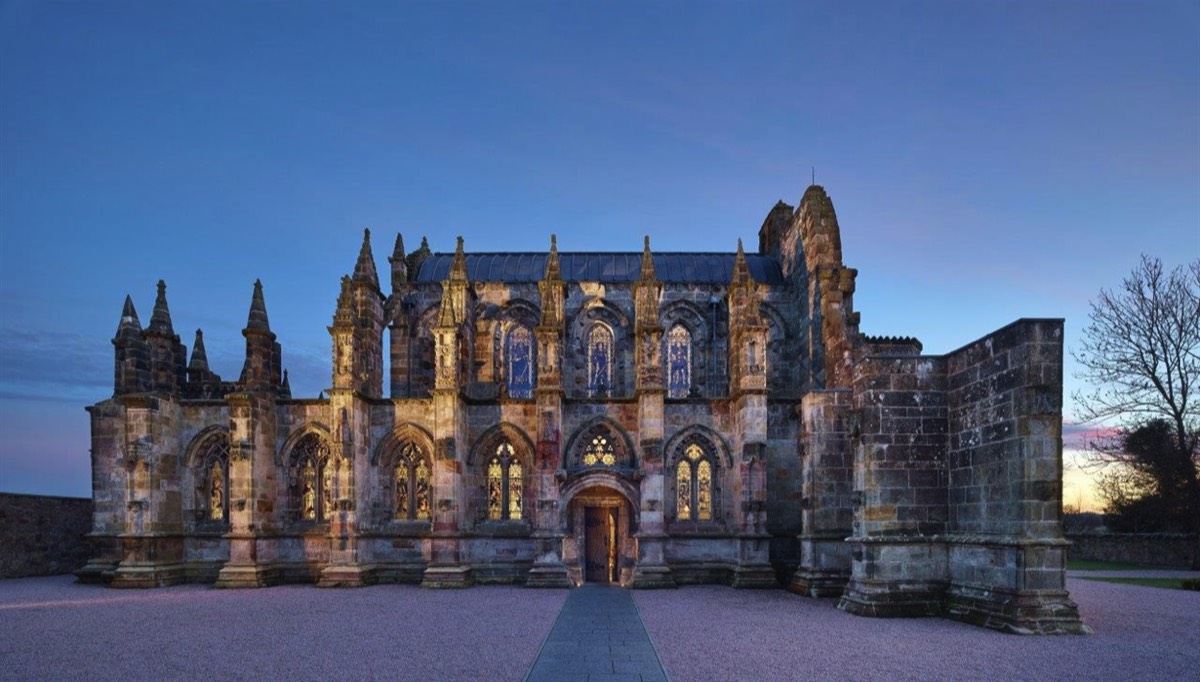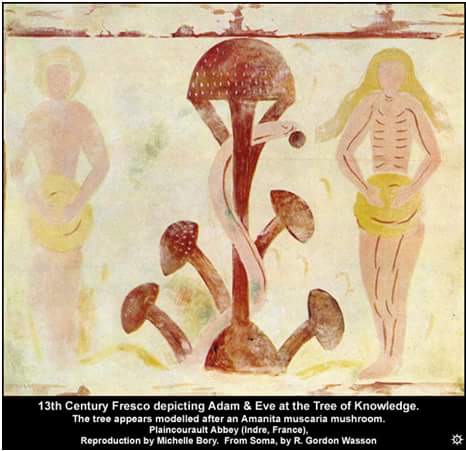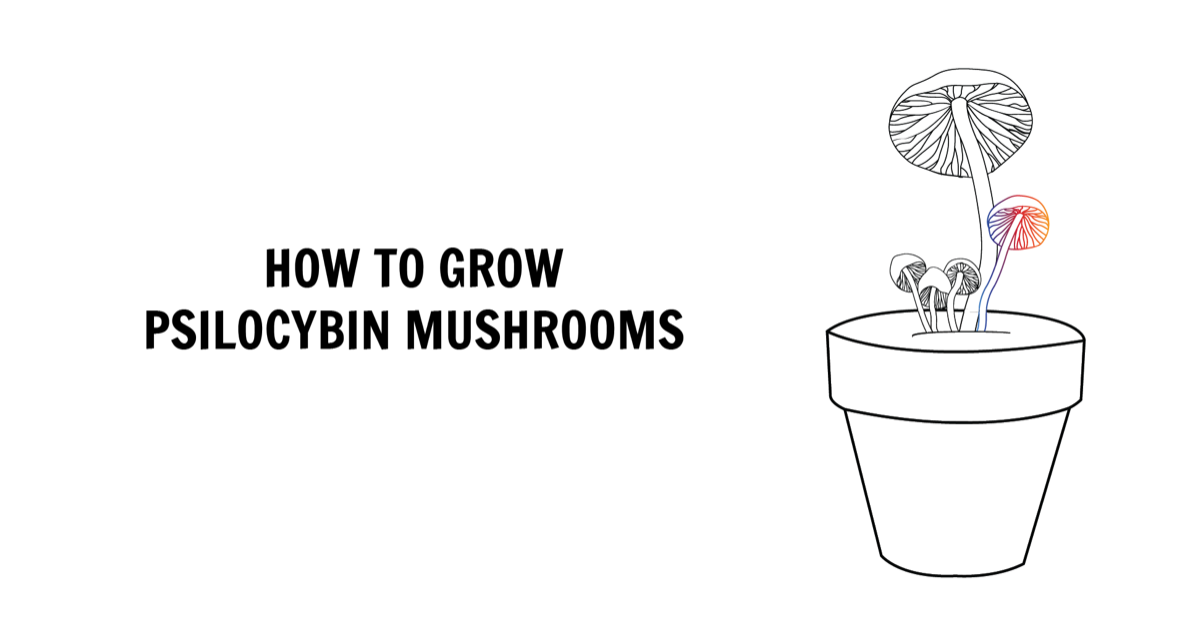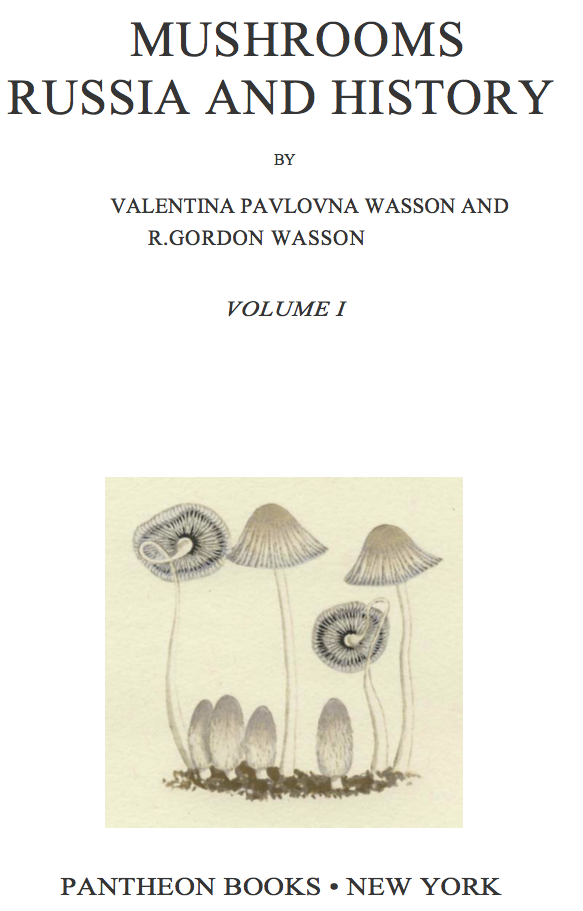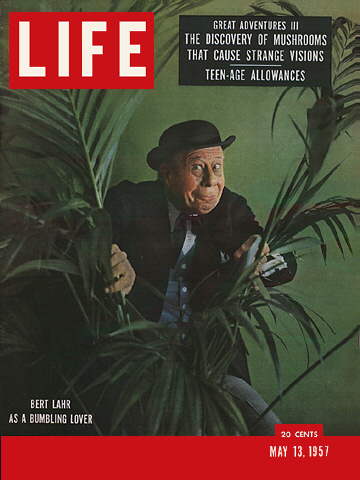
Psilocybin & Psilocin
EFFECTS CLASSIFICATION
Psychedelic Tryptamine
CHEMICAL NAME
Psilocybin: O-phosphoryl-4-hydroxy-N,N-dimethyltryptamine
Psilocin: 4-hydroxy-N,N-dimethyltryptamine
DESCRIPTION
Psilocybin and psilocin are naturally occurring psychedelics with a long history of human use. Both are present in 'psychedelic' or 'magic' mushrooms. Psilocybin, the better known of these two chemicals, is metabolized after ingestion into psilocin, which is the primary active chemical.
Mushroom Spawn Lab
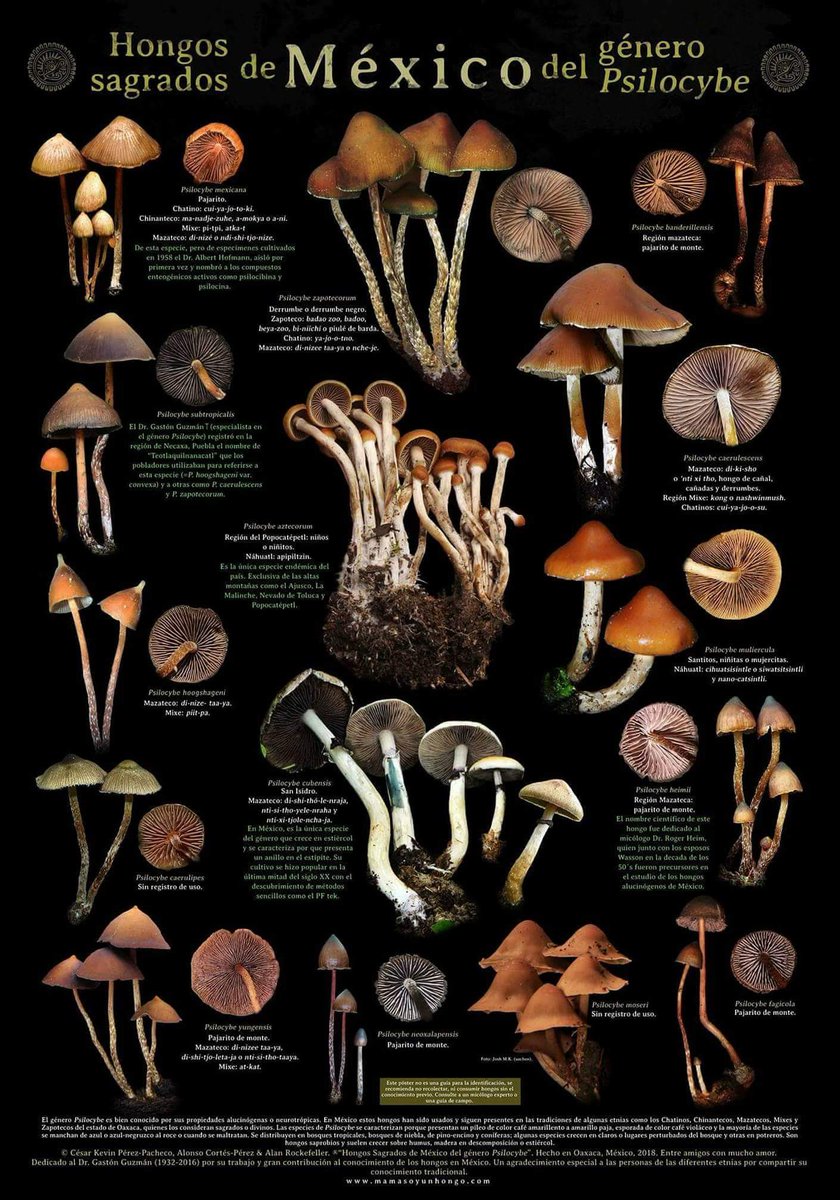
Psychedelic Mushrooms: Truly Ancient
12,000 years is a pretty long time by human standards. That long ago, the world was very different. The last ice age had just ended; many modern oceans, including the North Sea, were not yet under water, and ice still covered most of North America. Humans had just begun to spread across the American continent, and had established themselves in Australia.
And psychedelic mushrooms were just beginning to make their way into human culture.
In the earliest recorded depictions of psychedelic mushrooms, cave paintings have been found in northern Australia that suggest the use of magic mushrooms among indigenous Australian cultures, around 10,000 BCE.1 Similar depictions of psychedelic mushrooms have been found in other ancient human civilizations, albeit at later times, including Mesoamerican and South American cultures.
Psychedelic mushrooms clearly had an influence on the development of the cultures that used them. There is considerable evidence that these plants were used in religious ceremonies dating back to 1500 BCE in pre-Mayan cultures.3 They were consumed for their healing properties, and for the visionary states they could induce. The use of psychedelic mushrooms is depicted in many forms of Mesoamerican art and sculpture. Most famously, the Tepantitla mural shows a goddess showering rain onto the ground, sprouting psychedelic mushrooms for the priests to collect.
12,000 years is a pretty long time by human standards. That long ago, the world was very different. The last ice age had just ended; many modern oceans, including the North Sea, were not yet under water, and ice still covered most of North America. Humans had just begun to spread across the American continent, and had established themselves in Australia.
And psychedelic mushrooms were just beginning to make their way into human culture.
In the earliest recorded depictions of psychedelic mushrooms, cave paintings have been found in northern Australia that suggest the use of magic mushrooms among indigenous Australian cultures, around 10,000 BCE.1 Similar depictions of psychedelic mushrooms have been found in other ancient human civilizations, albeit at later times, including Mesoamerican and South American cultures.
Psychedelic mushrooms clearly had an influence on the development of the cultures that used them. There is considerable evidence that these plants were used in religious ceremonies dating back to 1500 BCE in pre-Mayan cultures.3 They were consumed for their healing properties, and for the visionary states they could induce. The use of psychedelic mushrooms is depicted in many forms of Mesoamerican art and sculpture. Most famously, the Tepantitla mural shows a goddess showering rain onto the ground, sprouting psychedelic mushrooms for the priests to collect.
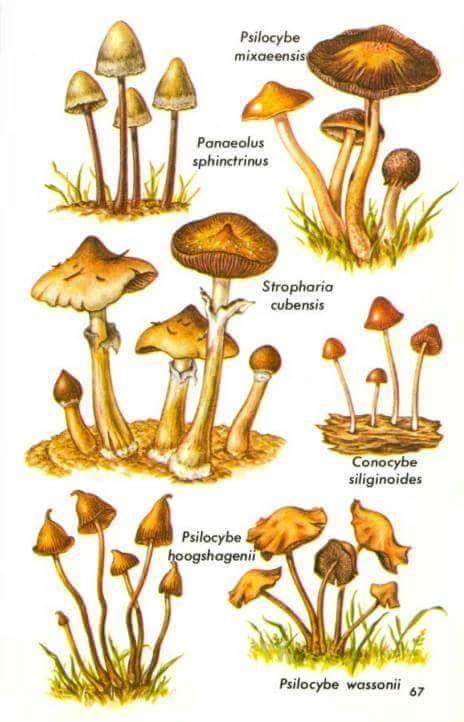
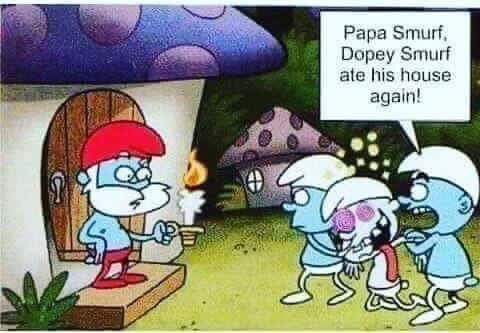
Psychedelic Mushrooms
The traditional use of psychedelic mushrooms has not dried up. Indigenous groups in Mexico still use psychedelic mushrooms as an integral part of their culture. In a rare example of considerate drug policy, Mexican police turn a blind eye to the traditional, religious use of shrooms.
People know that you don’t have to be religious to use magic mushrooms, and millions have used psychedelic mushrooms in their lifetimes.5 Enthusiasts everywhere are picking them in fields, or growing them in their own gardens. In the Netherlands, you can buy them in coffee shops. And, before too long, you could be seeing psychedelic mushrooms prescribed by your doctor.
Science Catches up to Shrooms
Since the prohibition of psychedelic mushrooms in the 1960s, research into their potential healing benefits died out. However, spurred by a recent renewal in interest, the past few years has seen scientists across the world unearthing the ancient secrets of magic mushrooms. Traditional use of psychedelic mushrooms has always centered on their healing properties. In Mesoamerican cultures, shrooms were used to treat anxiety, toothache, fever and gout.6 7
A myriad of research has revealed to the world exactly how magic mushrooms could help to heal society. From serious addiction to deficits in compassion, shrooms could be the cure for a number of modern problems. Research on the main psychoactive component in psychedelic mushrooms, psilocybin, has shown that a single treatment with the substance could be effective in people suffering from severe depression.
A small but important study produced remarkable results in 12 patients with severe depression who had failed to find effective treatments after many years of suffering.8 The patients were given a moderate dose of psilocybin, then, seven days later, a high dose of psilocybin, both times in a comfortable setting with a clinical psychologist present to offer support and therapy. The patient’s depressive symptoms were measured before, one week after and three months after the trial using an approved scoring system. All the patients showed improved depression scores after a week, and many retained this improvement after three months.
The traditional use of psychedelic mushrooms has not dried up. Indigenous groups in Mexico still use psychedelic mushrooms as an integral part of their culture. In a rare example of considerate drug policy, Mexican police turn a blind eye to the traditional, religious use of shrooms.
People know that you don’t have to be religious to use magic mushrooms, and millions have used psychedelic mushrooms in their lifetimes.5 Enthusiasts everywhere are picking them in fields, or growing them in their own gardens. In the Netherlands, you can buy them in coffee shops. And, before too long, you could be seeing psychedelic mushrooms prescribed by your doctor.
Science Catches up to Shrooms
Since the prohibition of psychedelic mushrooms in the 1960s, research into their potential healing benefits died out. However, spurred by a recent renewal in interest, the past few years has seen scientists across the world unearthing the ancient secrets of magic mushrooms. Traditional use of psychedelic mushrooms has always centered on their healing properties. In Mesoamerican cultures, shrooms were used to treat anxiety, toothache, fever and gout.6 7
A myriad of research has revealed to the world exactly how magic mushrooms could help to heal society. From serious addiction to deficits in compassion, shrooms could be the cure for a number of modern problems. Research on the main psychoactive component in psychedelic mushrooms, psilocybin, has shown that a single treatment with the substance could be effective in people suffering from severe depression.
A small but important study produced remarkable results in 12 patients with severe depression who had failed to find effective treatments after many years of suffering.8 The patients were given a moderate dose of psilocybin, then, seven days later, a high dose of psilocybin, both times in a comfortable setting with a clinical psychologist present to offer support and therapy. The patient’s depressive symptoms were measured before, one week after and three months after the trial using an approved scoring system. All the patients showed improved depression scores after a week, and many retained this improvement after three months.
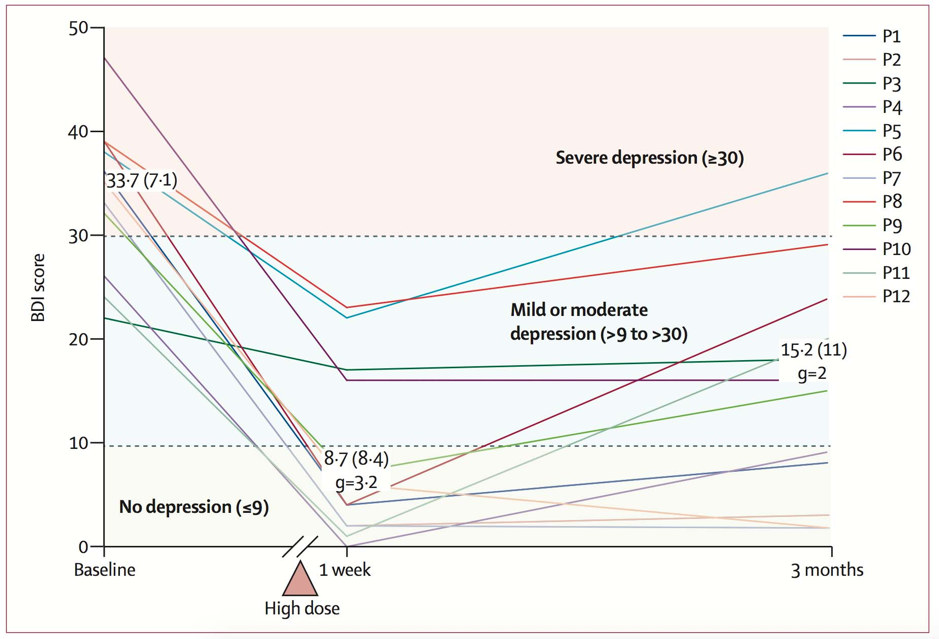
– Depression scores of 12 patients after treatment with psilocybin. From Carhart-Harris et al. (2016) 9
Tobacco addiction is one of the biggest health problems facing modern society, and psychedelic mushrooms could help. One pilot study from 2014 recruited 15 smokers who, on average, had been smoking for 30 years, and put them on a 15-week course of psychotherapy, during which they were given three doses of psilocybin.10 Six months after the study, 80% of the participants were abstinent from smoking, as indicated by physiological tests and questionnaires.
The same group then released a follow-up study: 12 months after the treatment, 67% of participants were abstinent.11 At 16 months, 60% still weren’t smoking. These results are much more impressive than those from typical smoking cessation treatments, that show around 30% abstinence after 12 months.12 13 These anti-addictive effects of psychedelic mushrooms run parallel to similar properties in plant medicines like ayahuasca, iboga, and peyote; the latter of which has been used traditionally by Native American communities to treat alcoholism.14
Another breakthrough study has shown that psychedelic mushrooms could help us conquer our fear of death. Twenty-nine patients suffering from depression associated with terminal illness were treated with a single dose of psilocybin that immediately and dramatically reduced symptoms of depression and anxiety.15 Six months later, over 60% of the patients were still enjoying beneficial effects, including reduced existential distress and improved attitude towards death. A natural substance that could help us accept our mortality has the potential to change everything: Death is one of the biggest taboos in society.
Finally, could psychedelic mushrooms help create a more compassionate society? One study has shown that a single dose of psilocybin can change our adult personality traits, making us more open and empathic. This finding may be surprising to some psychologists, who have put forth the idea that adult personality traits are immutable. Psychedelic mushrooms could help propel our society towards a more accepting and open culture.16
Do psychedelic mushrooms look like a miracle medicine? Let’s be honest; they’re probably not a panacea, but it’s wonderful to see an ancient healing plant being validated by modern science. So far, research like this has unraveled a lot of the mystery behind magic mushrooms. But they could still have some secrets hidden in their slimy stalks.
Modern Mysticism?
A common theme in all the rigorous scientific study of psychedelic mushrooms is that their healing benefit is partially dependent on their potential for enhancing spirituality. For example, one of the recent studies using psilocybin to treat depression found that the greatest beneficial effects came when the participants rated the experience as highly mystical.17 Similarly, people who’d successfully quit smoking after a treatment with psilocybin were more likely to have had a mystical experience.18
A famous investigation of the mystical properties of psychedelic mushrooms took place back in the hazy days of the 1960s counterculture.19 Walter Pahnke gave either psilocybin or a placebo to 20 divinity students at Harvard, and had them spend Good Friday in church. The students that had been given psilocybin rated their experience as significantly more spiritual than those given a placebo. The main ingredient in psychedelic mushrooms had generated genuine spiritual experiences in the subjects.
So, we know that psilocybin can induce a visionary, spiritual state. But why does the mystical or meaningful aspect of a psychedelic mushroom trip matter in regard to its healing properties? It’s a question that probably won’t have a straightforward answer. We hope that the spiritual element of psilocybin-assisted healing will prompt psychiatrists to consider more holistic methods of treating mental health conditions. Instead of seeing the unwell brain as a collection of chemical imbalances, we may begin to treat the human mind as a complex system that has the capacity to heal itself.
Psychedelic Mushrooms are Growing
These ancient fungi have been around human culture for at least 12,000 years. Their influence up until this point is pretty much impossible to know, but they may have shaped the development of our earliest societies. Who knows how much longer they will be around, and how much more they will influence the growth of our society? One thing is for certain: underestimating these psychedelic mushrooms is not advised.
References
Pettigrew, J. (2011). Iconography in Bradshaw rock art: Breaking the circularity. Clin Exp Optom, 94(5), 403–17. ↩
Pettigrew, J. (2011). Iconography in Bradshaw rock art: Breaking the circularity. Clin Exp Optom, 94(5), 403–17. ↩
Carod-Artal, F. J. (2015). Hallucinogenic drugs in pre-Columbian Mesoamerican cultures. Neurologia, 30(1), 42–9. ↩
Carod-Artal, F. J. (2015). Hallucinogenic drugs in pre-Columbian Mesoamerican cultures. Neurologia, 30(1), 42–9. ↩
Krebs, T. S., & Johansen, P. (2013). Over 30 million psychedelic users in the United States. F1000Res, 2, 98. ↩
Carod-Artal, F. J. (2015). Hallucinogenic drugs in pre-Columbian Mesoamerican cultures. Neurologia, 30(1), 42–9. ↩
Guzman, G. (2008). Diversity and use of traditional Mexican medicinal fungi. Int J Med Mushr, 10(3). ↩
Carhart-Harris, R. L., Bolstridge, M., Rucker, J., Day, C. M. J., Erritzoe, D., Kaelen, M. … Nutt, D. J. (2016) Psilocybin with psychological support for treatment-resistant depression: An open-label feasibility study. Lancet Psychiatry, 3(7), 619–27. ↩
Carhart-Harris, R. L., Bolstridge, M., Rucker, J., Day, C. M. J., Erritzoe, D., Kaelen, M. … Nutt, D. J. (2016) Psilocybin with psychological support for treatment-resistant depression: An open-label feasibility study. Lancet Psychiatry, 3(7), 619–27. ↩
Johnson, M. W., Garcia-Romeu, A., & Griffiths, R. R. (2017). Long-term follow-up of psilocybin-facilitated smoking cessation. Am J Drug Alcohol Abuse, 43(1), 55–60. ↩
Johnson, M. W., Garcia-Romeu, A., & Griffiths, R. R. (2017). Long-term follow-up of psilocybin-facilitated smoking cessation. Am J Drug Alcohol Abuse, 43(1), 55–60. ↩
Tonnesen, P., Tønnesen, P., Tonstad, S., Hjalmarson, A., Lebargy, F., Van Spiegel, P. I., Hider, A. … Townsend, J. (2003). A multicentre, randomized, double-blind, placebo-controlled, 1-year study of bupropion SR for smoking cessation. J Intern Med, 254(2), 184–92. ↩
Hays, J. T., Ebbert, J. O., & Sood, A.. (2008). Efficacy and safety of varenicline for smoking cessation. Am J Med, 121(4), 32–42. ↩
Lu, L. Liu, Y, Zhu, W., Shi J, Liu, Y., Ling, W,, & Kosten, T. R. (2009) Traditional medicine in the treatment of drug addiction. Am J Drug Alcohol Abuse, 35(1), 1–11. ↩
Ross, S., Bossis, A., Guss, J., Agin-Liebes, G., Malone, T., Cohen, B. … Schmidt, B. L. (2016). Rapid and sustained symptom reduction following psilocybin treatment for anxiety and depression in patients with life-threatening cancer: A randomized controlled trial. J Psychopharmacol, 30(12), 1165–1180. ↩
MacLean, K.A., Johnson, M.r., & Griffith, R. R. (2011). Mystical experiences occasioned by the hallucinogen psilocybin lead to increases in the personality domain of openness. J Psychopharmacol, 25(11), 1452–1461. ↩
Griffiths, R.R., Johnson, M. W., Carducci, M. A., Umbricht, A., Richards, W.A., Richards, B. D. … Klinedinst, M. A. (2016). Psilocybin produces substantial and sustained decreases in depression and anxiety in patients with life-threatening cancer: A randomized double-blind trial. J Psychopharmacol, 30(12), 1181–1197. ↩
Garcia-Romeu, A., Griffiths, R. R., & Johnson, M. W. (2014). Psilocybin-occasioned mystical experiences in the treatment of tobacco addiction. Curr Drug Abuse Rev, 7(3), 157–164. ↩
Doblin, R. (1991). Pahnke’s “Good Friday Experiment”: A long-term follow-up and methodological critique. J Transpersonal Psychology, 23(1), 1–28. ↩
Tobacco addiction is one of the biggest health problems facing modern society, and psychedelic mushrooms could help. One pilot study from 2014 recruited 15 smokers who, on average, had been smoking for 30 years, and put them on a 15-week course of psychotherapy, during which they were given three doses of psilocybin.10 Six months after the study, 80% of the participants were abstinent from smoking, as indicated by physiological tests and questionnaires.
The same group then released a follow-up study: 12 months after the treatment, 67% of participants were abstinent.11 At 16 months, 60% still weren’t smoking. These results are much more impressive than those from typical smoking cessation treatments, that show around 30% abstinence after 12 months.12 13 These anti-addictive effects of psychedelic mushrooms run parallel to similar properties in plant medicines like ayahuasca, iboga, and peyote; the latter of which has been used traditionally by Native American communities to treat alcoholism.14
Another breakthrough study has shown that psychedelic mushrooms could help us conquer our fear of death. Twenty-nine patients suffering from depression associated with terminal illness were treated with a single dose of psilocybin that immediately and dramatically reduced symptoms of depression and anxiety.15 Six months later, over 60% of the patients were still enjoying beneficial effects, including reduced existential distress and improved attitude towards death. A natural substance that could help us accept our mortality has the potential to change everything: Death is one of the biggest taboos in society.
Finally, could psychedelic mushrooms help create a more compassionate society? One study has shown that a single dose of psilocybin can change our adult personality traits, making us more open and empathic. This finding may be surprising to some psychologists, who have put forth the idea that adult personality traits are immutable. Psychedelic mushrooms could help propel our society towards a more accepting and open culture.16
Do psychedelic mushrooms look like a miracle medicine? Let’s be honest; they’re probably not a panacea, but it’s wonderful to see an ancient healing plant being validated by modern science. So far, research like this has unraveled a lot of the mystery behind magic mushrooms. But they could still have some secrets hidden in their slimy stalks.
Modern Mysticism?
A common theme in all the rigorous scientific study of psychedelic mushrooms is that their healing benefit is partially dependent on their potential for enhancing spirituality. For example, one of the recent studies using psilocybin to treat depression found that the greatest beneficial effects came when the participants rated the experience as highly mystical.17 Similarly, people who’d successfully quit smoking after a treatment with psilocybin were more likely to have had a mystical experience.18
A famous investigation of the mystical properties of psychedelic mushrooms took place back in the hazy days of the 1960s counterculture.19 Walter Pahnke gave either psilocybin or a placebo to 20 divinity students at Harvard, and had them spend Good Friday in church. The students that had been given psilocybin rated their experience as significantly more spiritual than those given a placebo. The main ingredient in psychedelic mushrooms had generated genuine spiritual experiences in the subjects.
So, we know that psilocybin can induce a visionary, spiritual state. But why does the mystical or meaningful aspect of a psychedelic mushroom trip matter in regard to its healing properties? It’s a question that probably won’t have a straightforward answer. We hope that the spiritual element of psilocybin-assisted healing will prompt psychiatrists to consider more holistic methods of treating mental health conditions. Instead of seeing the unwell brain as a collection of chemical imbalances, we may begin to treat the human mind as a complex system that has the capacity to heal itself.
Psychedelic Mushrooms are Growing
These ancient fungi have been around human culture for at least 12,000 years. Their influence up until this point is pretty much impossible to know, but they may have shaped the development of our earliest societies. Who knows how much longer they will be around, and how much more they will influence the growth of our society? One thing is for certain: underestimating these psychedelic mushrooms is not advised.
References
Pettigrew, J. (2011). Iconography in Bradshaw rock art: Breaking the circularity. Clin Exp Optom, 94(5), 403–17. ↩
Pettigrew, J. (2011). Iconography in Bradshaw rock art: Breaking the circularity. Clin Exp Optom, 94(5), 403–17. ↩
Carod-Artal, F. J. (2015). Hallucinogenic drugs in pre-Columbian Mesoamerican cultures. Neurologia, 30(1), 42–9. ↩
Carod-Artal, F. J. (2015). Hallucinogenic drugs in pre-Columbian Mesoamerican cultures. Neurologia, 30(1), 42–9. ↩
Krebs, T. S., & Johansen, P. (2013). Over 30 million psychedelic users in the United States. F1000Res, 2, 98. ↩
Carod-Artal, F. J. (2015). Hallucinogenic drugs in pre-Columbian Mesoamerican cultures. Neurologia, 30(1), 42–9. ↩
Guzman, G. (2008). Diversity and use of traditional Mexican medicinal fungi. Int J Med Mushr, 10(3). ↩
Carhart-Harris, R. L., Bolstridge, M., Rucker, J., Day, C. M. J., Erritzoe, D., Kaelen, M. … Nutt, D. J. (2016) Psilocybin with psychological support for treatment-resistant depression: An open-label feasibility study. Lancet Psychiatry, 3(7), 619–27. ↩
Carhart-Harris, R. L., Bolstridge, M., Rucker, J., Day, C. M. J., Erritzoe, D., Kaelen, M. … Nutt, D. J. (2016) Psilocybin with psychological support for treatment-resistant depression: An open-label feasibility study. Lancet Psychiatry, 3(7), 619–27. ↩
Johnson, M. W., Garcia-Romeu, A., & Griffiths, R. R. (2017). Long-term follow-up of psilocybin-facilitated smoking cessation. Am J Drug Alcohol Abuse, 43(1), 55–60. ↩
Johnson, M. W., Garcia-Romeu, A., & Griffiths, R. R. (2017). Long-term follow-up of psilocybin-facilitated smoking cessation. Am J Drug Alcohol Abuse, 43(1), 55–60. ↩
Tonnesen, P., Tønnesen, P., Tonstad, S., Hjalmarson, A., Lebargy, F., Van Spiegel, P. I., Hider, A. … Townsend, J. (2003). A multicentre, randomized, double-blind, placebo-controlled, 1-year study of bupropion SR for smoking cessation. J Intern Med, 254(2), 184–92. ↩
Hays, J. T., Ebbert, J. O., & Sood, A.. (2008). Efficacy and safety of varenicline for smoking cessation. Am J Med, 121(4), 32–42. ↩
Lu, L. Liu, Y, Zhu, W., Shi J, Liu, Y., Ling, W,, & Kosten, T. R. (2009) Traditional medicine in the treatment of drug addiction. Am J Drug Alcohol Abuse, 35(1), 1–11. ↩
Ross, S., Bossis, A., Guss, J., Agin-Liebes, G., Malone, T., Cohen, B. … Schmidt, B. L. (2016). Rapid and sustained symptom reduction following psilocybin treatment for anxiety and depression in patients with life-threatening cancer: A randomized controlled trial. J Psychopharmacol, 30(12), 1165–1180. ↩
MacLean, K.A., Johnson, M.r., & Griffith, R. R. (2011). Mystical experiences occasioned by the hallucinogen psilocybin lead to increases in the personality domain of openness. J Psychopharmacol, 25(11), 1452–1461. ↩
Griffiths, R.R., Johnson, M. W., Carducci, M. A., Umbricht, A., Richards, W.A., Richards, B. D. … Klinedinst, M. A. (2016). Psilocybin produces substantial and sustained decreases in depression and anxiety in patients with life-threatening cancer: A randomized double-blind trial. J Psychopharmacol, 30(12), 1181–1197. ↩
Garcia-Romeu, A., Griffiths, R. R., & Johnson, M. W. (2014). Psilocybin-occasioned mystical experiences in the treatment of tobacco addiction. Curr Drug Abuse Rev, 7(3), 157–164. ↩
Doblin, R. (1991). Pahnke’s “Good Friday Experiment”: A long-term follow-up and methodological critique. J Transpersonal Psychology, 23(1), 1–28. ↩
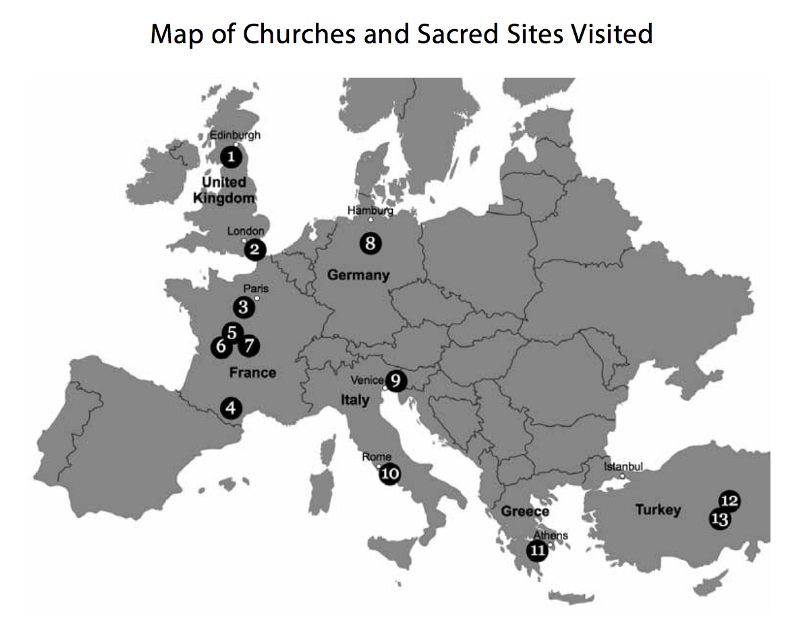
1) Rosslyn Chapel, Scotland. 2) Canterbury Cathedral, England. 3) Chartres Cathedral, France. 4) Rennes Le Château, France. 5) Chapel of Plaincourault, France. 6) Abbey of Saint-Savin, France. 7) Church of Saint Martin, France. 8) Saint Michael’s Church, Germany. 9) Basilica of Aquileia, Italy. 10) Vatican Museums, Italy. 11) Eleusis, Greece. 12) Dark Church, Turkey. 13) Ihlara Valley, Turkey.
